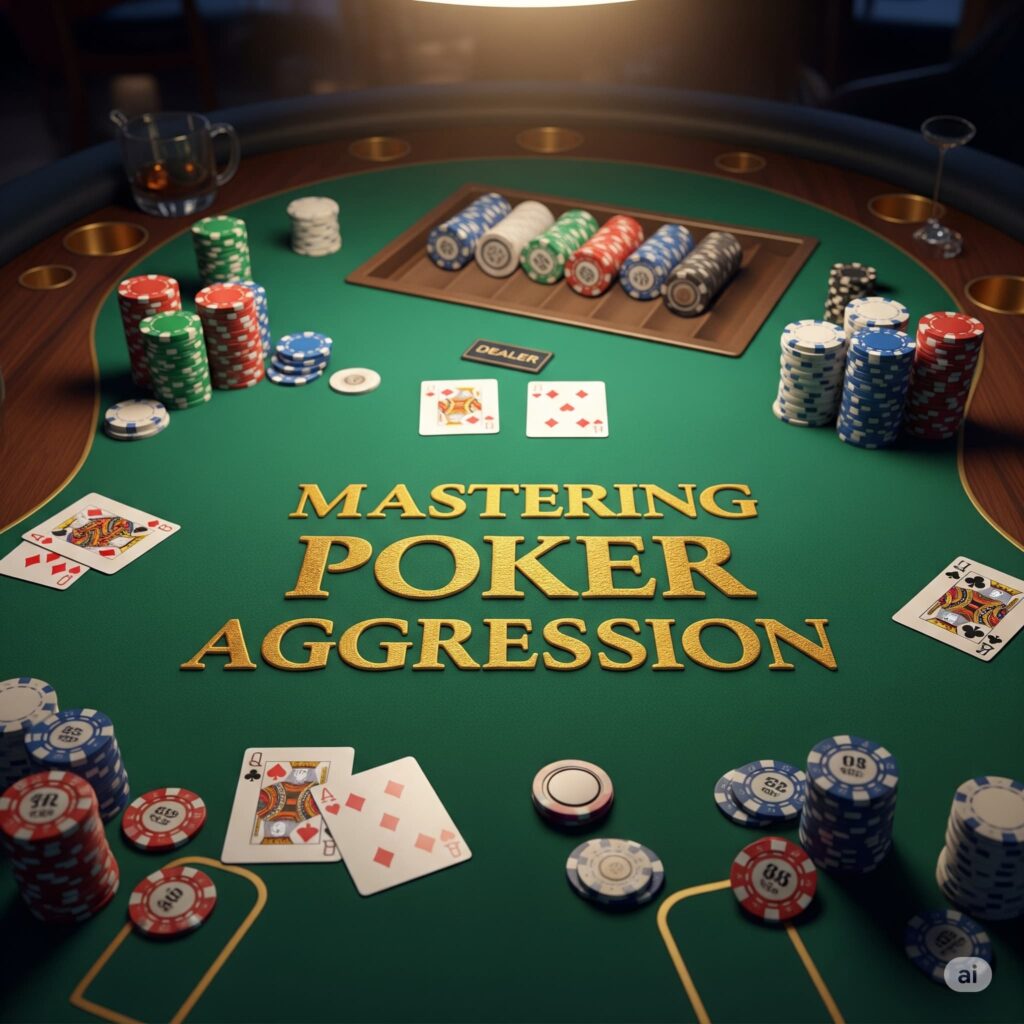Aggression is a fundamental component of a winning poker strategy. It’s the force that allows you to take down pots without showing the best hand and ensures you get maximum value when you do hold a powerhouse. However, the line between profitable aggression and reckless over-aggression is a fine one, and understanding where that line lies is a complex part of mastering the game. This article explores when to apply pressure and when to pull back, looking at both Game Theory Optimal (GTO) and exploitative approaches.

When to Turn Up the Heat: Beneficial and Optimal Aggression
Knowing the right moments to be aggressive can significantly boost your win rate. It allows you to control the flow of the game and put your opponents in difficult situations.
Core Benefits of Aggression
- Winning Without a Showdown: One of the primary advantages of aggression is its ability to win you the pot without needing the best hand.
- Getting Paid Off: If you cultivate an aggressive image, your opponents will be more inclined to call your bets, meaning you get paid more when you are holding a strong hand.
Strategic Bet Sizing
The amount you bet is just as crucial as the decision to bet itself.
- Big Bet Sizing: On certain board textures and in specific formations, a large bet can be the optimal play. This puts maximum pressure on your opponent, making their decisions more complex and forcing them to mix their calling and folding frequencies with a variety of hands. This complexity can lead them into making bigger and more costly mistakes.
- Small Bet Sizing: At smaller stakes, a smaller bet size is often more effective. It is simpler to execute and can be used with a wide range of hands (a “range bet”) without a significant loss in Expected Value (EV). Players at lower stakes also tend not to counter smaller bets with check-raises as often as they should, making this a beneficial strategy.
Bluffing with a Backup Plan: Equity and Blockers
The most effective bluffs are not random; they are calculated risks with a safety net.
- Bluffing with Equity: The best hands to bluff aggressively with are those that have good equity, such as flush draws, straight draws, or a combination of a straight draw and a pair.
- The Power of a Pair: Having a pair when bluffing is valuable because it gives you extra outs to improve to a better hand and also blocks some of your opponent’s strong combinations, like two pair or sets. Aggressive bets with these types of hands can even force better hands to fold, including second, third, and sometimes even weak top pairs.
GTO-Confirmed Aggression
Game Theory Optimal (GTO) play confirms that in certain situations, maximum aggression is the correct play. This is particularly true when your range of possible hands is “uncapped,” meaning you can have the strongest possible hands (the “nuts”), while your opponent’s range is “capped” and does not contain those hands. In these spots, large bets or even all-in shoves are supported by GTO principles.
Exploitative Aggression: Deviating for Profit
This approach involves moving away from a strict GTO strategy to take advantage of an opponent’s specific tendencies.
- Targeting Over-folders: A straightforward way to boost your win rate is to identify when your opponents fold more often than they should. For instance, data indicates that players at low and mid-stakes frequently over-fold to a delayed continuation bet on particular boards. In this case, bluffing more often than GTO would recommend becomes a highly profitable exploitative play.
Knowing When to Hit the Brakes: When Aggression is “Too Much”
Excessive aggression occurs when it’s no longer profitable and leaves you vulnerable to being exploited by observant opponents.
The Danger of Ineffective Bluffs
A bluff’s profitability hinges on your opponent’s folding frequency.
- Bluffing Without Fold Equity: A bet can only be a profitable bluff if your opponent over-folds significantly. For example, in a specific river scenario with Ace-Ten, a bluff bet is only profitable if the opponent over-folds by a large margin (12 percentage points). This would require them to fold hands like third and fourth pairs 70% of the time, an unlikely scenario in high-stakes games.
- Ignoring Showdown Value: In that same Ace-Ten example, the hand has showdown value because it can beat weaker Ace-X hands that an opponent might also check. Betting with a hand that should be checked for its showdown value, particularly when you don’t expect your opponent to over-fold, is a clear example of “too much aggression”.
The Risk of Counter-Exploitation
Deviating heavily from GTO can backfire if you’re not careful.
- Opening Yourself Up: When you bluff with hands that GTO suggests checking (like the rivered Ace-Ten), you become vulnerable to “re-exploitation”.
- Losing to Adjustments: An aware opponent who can quickly adapt to your strategy can “print money” by check-calling with hands that would normally fold to a GTO-based strategy. This turns your attempted exploit into a costly mistake, leading to significant losses.
Mastering aggression in poker is a delicate balance. It requires a deep understanding of GTO principles as a baseline, combined with the situational awareness to apply exploitative strategies when the time is right. By learning when to push the pedal and when to ease off, you can make your aggression a powerful and profitable weapon at the tables.
